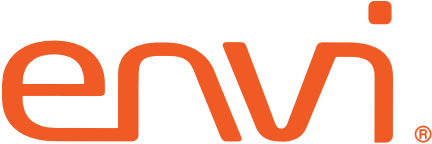Is implementing new technology a core competency – or just an unpleasant inevitability?
-by Jeff Lawrence

Death, taxes and new software implementations. Are you good at them, or are they just unpleasant inevitabilities for you and your team to muscle through? Let’s face it – in our businesses today, implementing new technology is just part of what we do, so we need to get good at it.
The team at IOS is proud to work with a large customer base, continually implementing new customers on the Envi solution. During these implementations we often see best practices being demonstrated by our customer organizations.
Recently, we got to work with a group that showed exceptional skill in implementation planning and execution – in fact, they were selected as our Q2 Best Practice Award winner. What we saw as we worked with Community Blood Center of the Carolinas (CBCC) was a proven ability to align people, process and technology – not just talk about it – and drive a better implementation process on the front end, to drive better results on the back end.
The topic of implementation is a big one and covers so many functional areas: system set-up, team preparation and training, process mapping, vendor management, data prep and cleansing, setting up inventory locations, and more. Good front end planning is key to implementing new technology effectively – not just automating old processes.
As you plan your next software implementation, consider 11 Best Practices that can help get the most from new technology:
1. Collaborate among executive and supply chain team members to develop your supply chain vision and plan. Identify the executive sponsor, who will communicate the plan and its benefits to your entire organization, and continually report status of the project. Set goals to achieve greater automation, centralization, visibility and control, which will help continuously drive success.
2. Create an internal project team that includes staff from areas with the greatest impact, such as project management, procurement/supply chain management and finance.
3. Build process maps to compare current to desired future state; identify gaps that you want to address with technology.
4. Create tasks, process workflows and well-defined user roles.
5. Spend time on data preparation; if needed, identify a third party to help with data cleansing and normalization.
6. Build a central formulary of approved products, directing buyers to on-contract products.
7. Develop processes to address purchase order approvals – for both standard and non-stock purchases.
8. Drive adoption by proactively preparing end users for change. Invest the time needed for training (both onsite and web-based) to be sure users are ready at go-live.
9. Plan your processes to improve visibility to inventory, so you can see supplies in various locations. This will help reduce your overall spend in the future.
10. Trust the experts! Implementation managers live in the world of implementation best practices and know how to get the greatest results.
11. The executive sponsor should report out to the entire organization on the achievement of successful milestones. Your organization is making an investment – let everyone know that compliance is a requirement, not an option.
If you’d like to read more on the CBCC story, click here.
Watch for more ideas in the coming months to help set up your organization for successful implementations. In the meantime, don’t hesitate to call our team at IOS with any questions – reach our team at 1.800.700.4467.
About the Author

Vice President of Business Development
Inventory Optimization Solutions (IOS)
With a substantial background in healthcare supply chain technology, Jeff Lawrence joined Inventory Optimization Solutions (IOS) in 2009 as the Vice President of Business Development. For over 20 years, Jeff has focused on leveraging supply chain technology to build a more efficient and sustainable healthcare industry. With hands-on experience helping providers implement technology to improve business processes, Jeff works in partnership with his customers, sharing best practices to increase automation and improve overall business results. Jeff’s career has included roles in business development and sales, along with finance, implementation, operations, and strategy development. He brings a strong blend of customer focus, business strategy, innovation and execution, which helps IOS quickly and efficiently deliver inventory and supply management solutions to provider organizations throughout the continuum of care.

